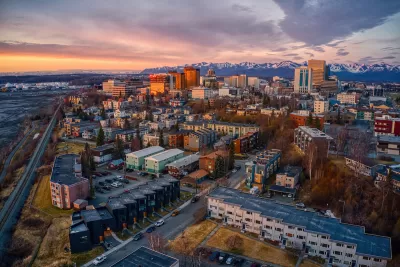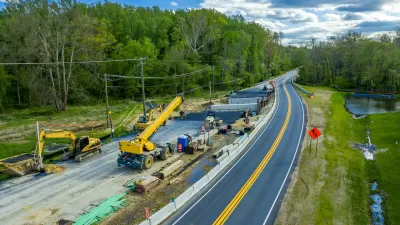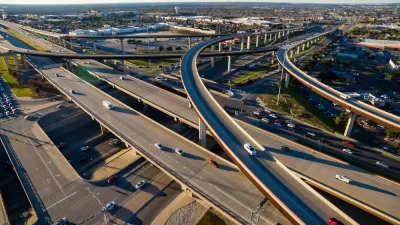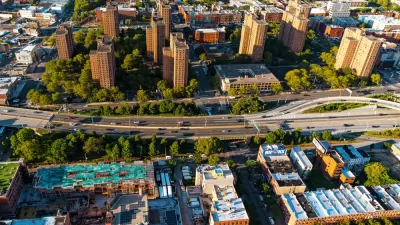The Alaska Department of Transportation and its consultants are working on a Planning and Environmental Linkages study of the Glenn-Seward Highway that bisects the middle of Anchorage, Alaska.

State transportation officials have presented a variety of concepts for a new high-speed highway that cuts through the center of the city, but there is growing consensus among members of the public and some local officials around less expensive options that could change how everyone gets in, out and around Alaska's largest urban area.
According to an article from Alaska Public Media by Jeremy Hsieh, “The flashiest idea calls for building a new highway bypass through the Airport Heights neighborhood with an elevated viaduct over park land.” But officials from the Anchorage Metropolitan Area Transportation Solutions (AMATS), the local metropolitan planning organization, say their long term plan involves rebuilding the roads with Complete Street elements in mind. “That would likely mean fewer vehicle lanes, lower speed limits, safer sidewalks, better crosswalks and bike-friendly improvements. The AMATS estimate for that is about $75 million.”
A preliminary list of project options are being refined based on public input. Concepts for a new high-speed highway alternative have been met with skepticism from members of the public and some local officials.
FULL STORY: Key Anchorage stakeholders skeptical of megaproject solutions to connect Seward and Glenn highways

Maui's Vacation Rental Debate Turns Ugly
Verbal attacks, misinformation campaigns and fistfights plague a high-stakes debate to convert thousands of vacation rentals into long-term housing.

Planetizen Federal Action Tracker
A weekly monitor of how Trump’s orders and actions are impacting planners and planning in America.

San Francisco Suspends Traffic Calming Amidst Record Deaths
Citing “a challenging fiscal landscape,” the city will cease the program on the heels of 42 traffic deaths, including 24 pedestrians.

Defunct Pittsburgh Power Plant to Become Residential Tower
A decommissioned steam heat plant will be redeveloped into almost 100 affordable housing units.

Trump Prompts Restructuring of Transportation Research Board in “Unprecedented Overreach”
The TRB has eliminated more than half of its committees including those focused on climate, equity, and cities.

Amtrak Rolls Out New Orleans to Alabama “Mardi Gras” Train
The new service will operate morning and evening departures between Mobile and New Orleans.
Urban Design for Planners 1: Software Tools
This six-course series explores essential urban design concepts using open source software and equips planners with the tools they need to participate fully in the urban design process.
Planning for Universal Design
Learn the tools for implementing Universal Design in planning regulations.
Heyer Gruel & Associates PA
JM Goldson LLC
Custer County Colorado
City of Camden Redevelopment Agency
City of Astoria
Transportation Research & Education Center (TREC) at Portland State University
Jefferson Parish Government
Camden Redevelopment Agency
City of Claremont





























